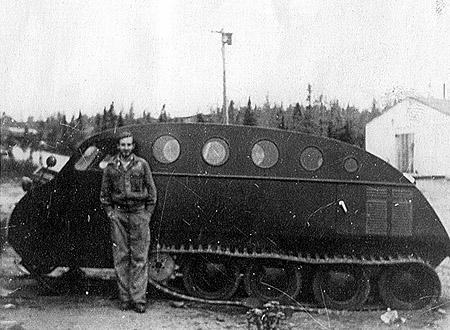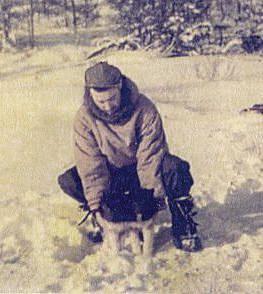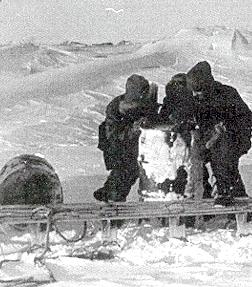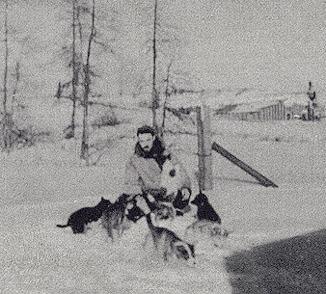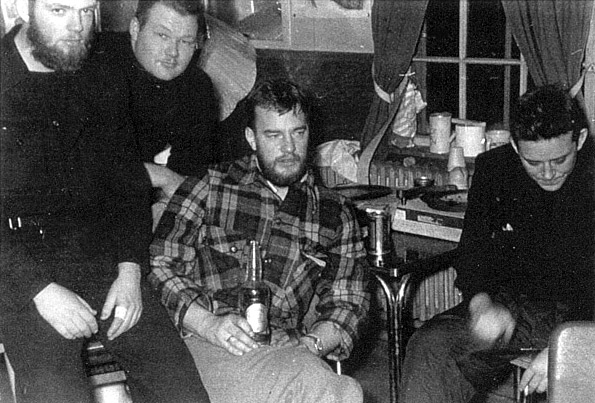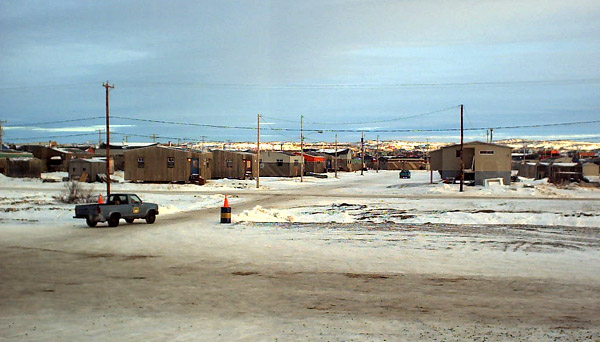 |
CGS C. D. HOWE was an ice-strengthened,
northern supply ship and like most ships of that class, she was not the
easiest vessel to manoeuvre. Note the heavy derricks and the boats used
to off-load supplies. This photo was taken after 1962 when the paint scheme
was just red and white. When she suppled Chimo she had a black hull, white
superstructure and a buff funnel.
The Howe's call sign was CGSS and she was fitted with an American Mackay
radio station. It was not until 1962 that the C.D. Howe became a CCGS.
(Canadian
Coast Guard. Photo submitted by Spud Roscoe)
|
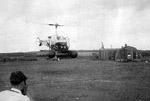 |
This Bell 47 helicopter from the C.D. Howe is
making a landing at Chimo.
Mounted on the stern of the ship was the helicopter hanger. It was a
telescoping, retractable structure which moved on two rails. When ready
for flight, the structure was completely retracted thus exposing the chopper.
None of the civilian or coast guard ships had a haul down system for helicopters
like the RCN's Bear Trap. (Photo by John Murison) |
|
|
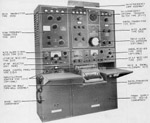 |
The Mackay MRU 19/20 station was fitted
on the Howe and many other ships in the 1950's. (Photo by ITT Telecommunications
submitted by Spud Roscoe) |
 |
This aerial photo shows the Chimo airport and
vicinity. (Department of Energy, Mines and Resources photo A12087117
submitted by John Murison) |
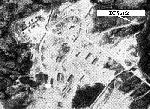 |
Closeup: Showing the the location of the DF site
(Department of Energy, Mines and Resources photo A12087117) |
|
|
 |
Airfield: RCAF C-47 Dakota with a Horsa
Glider in tow. Developed during WWII, the Horsa could carry 25 troops at
a tow speed of 127 mph and a glide speed of 100 mph. This was part of the
Sundog 2 Exercise. (Photo by John Murison) |
 |
Supplies: This Dakota from RCAF
Station Goose Bay (Nfld) is offloading supplies to a snowmobile. This was
a familiar scene in many parts of Canada's north. (Photo by John Murison) |
 |
RCAF Northstar: Another very familiar
aircraft in Canada's north was the Canadair Northstar. It was a unique
Canadian redevelopment of the Douglas C-54/DC-4 aircraft. Instead of radial
piston engines found on the Douglas design, Canadair selected Rolls-Royce
Merlin engines in order to achieve a 35 mph faster cruising speed. The
prototype first flew on 15 July 1946 and the type was selected by various
airlines as well as the RCAF. It could haul 44 passengers or 11,500 lbs
of cargo at 353 mph with a range of 402 miles at a cruising speed
of 325 mph. The Service Ceiling was 36,000 ft. (Photo by John
Murison) |
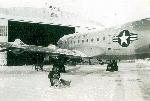 |
May Day: On 23 December , 1951 at 06:00,
a call was received from the D/F shack regarding an unidentified Mayday
call. The off-duty operators went outside and were able to hear the sound
of an approaching aircraft. Shortly afterwards they spotted the aircraft
overhead, firing red distress flares. The runway was not equipped with
lights and it was still quite dark so the available vehicles were driven
to the ends of the runway and were left there with their headlights still
on. The pilot managed to bring in the aircraft with three engines out and
the fourth one quit while it was still taxing on the strip. On closer inspection,
it was a USAF cargo ship headed home for Christmas. Spare parts were dispatched
to Chimo by the USAF but they didn't make it in time and the plane missed
its departure schedule. The operators invited the American air crew
to spend Christmas with them and they shared whatever they could thus making
new friends in the process. (Photo by John Murison) |
 |
A Mont Laurier Aviation PBY4 Catatlina.
This carrier transported equipment to mining companies and other civilian
organizations. Chimo was used for refuelling and sometimes an overnight
stay at the base. (Photo by John Murison) |
 |
B12: Many who served in Canada's north
will remember seeing the popular Bombardier B-12 snowmobile. Between 1945
and 1951, L’Auto-Neige Bombardier sold 2,596 vehicles. The Department of
Public Works owned the majority of the B-12's up north and they were painted
yellow. Here, the B-12 is depicted on a stamp issued by Canada Post. (Canada
Post image) |
